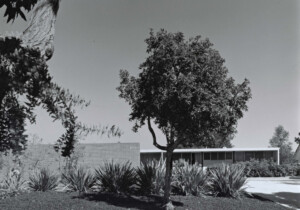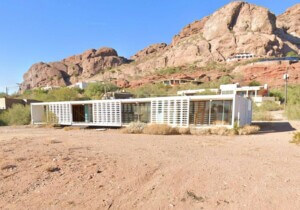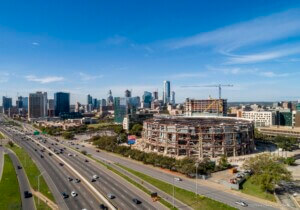A section of Seattle’s Waterfront Park at Pier 58 that had just recently been closed off for planned emergency demolition work collapsed this weekend. The collapse, which involved roughly 15,000 square feet, or a fifth of the aging pier per the Seattle Department of Transportation, sent two construction workers falling into the waters of Elliot Bay below. Both workers were rescued and transported to Harborview Medical Center and, as of yesterday, were reported to be in stable condition. No damage was observed at neighboring Pier 57 or along the Seattle seawall.
Fortunately, the collapse was nowhere as calamitous as it could have been considering that Pier 58, which is located between two major waterfront tourist attractions—the Seattle Aquarium and the Seattle Great Wheel—had been sealed off to the public in early August after engineers noticed “substantial” shifting activity at Waterfront Park, which had left a gap of several inches between the long-deteriorating pier and its anchoring seawall. Shortly after shuttering Waterfront Park to the public, Seattle Mayor Jenny Durkan approved the “emergency dismantling” of Pier 58 while urging the public to avoid the immediate barricaded area. After additional deterioration was discovered late last week during extensive monitoring activities, demolition work commenced post-haste, two years ahead of schedule to make way for a new, revitalized park per the Seattle Post-Intelligencer.
According to a news statement released by the city, workers were “in the process of removing a concrete section of the pier to delay further pier movement” when the collapse occurred.
The statement elaborated:
“Seven people were working on the pier when the collapse occurred. In addition to safety protocols in place for this work, there were multiple points of egress available in case of an emergency and most workers were able to exit using those, while two workers fell into the water and were quickly removed from the water before the Seattle Fire Department arrived. All workers on the pier were wearing personal flotation devices as specified by safety protocols.”
Work will resume on the pier’s removal when it’s deemed safe to do so. As Marshall Foster, director of the city of Seattle’s Office of the Waterfront and Civic Projects, explained to the Seattle Times, demolition work on sections of the pier that remain standing will be approached differently than it normally would following the collapse; the northeastern section of the pier that collapsed will need to be removed along with a four-ton bronze fountain that sunk into the bay during the incident.
“This year continues to present immense and unprecedented challenges for us as a city,” Mayor Durkan tweeted. “In the coming days, we will evaluate Pier 58 to determine appropriate next steps and potential broader impacts.”
While Seattle has been, as mentioned by Durkan, beset with costly infrastructural quandaries (the ongoing closure of the structurally compromised West Seattle Bridge could be categorized as more of a full-fledged crisis) and other hardships over the past several months, there is a rare bright spot of news associated this past weekend’s collapse of Pier 58. Plans to remove the “aging piece of infrastructure long slated for a significant overhaul” and replace it with a new overwater park were, as mentioned, already in the works, and the project is already fully planned and funded.
“Having funding already in place for a new Pier 58 allowed the City to move quickly in removing the existing pier,” the city explained. It is unclear, however, if the added complexity of demolishing a pier that’s already partially collapsed on its own will impact the total removal costs.
And while frightening and unexpected, the collapse has brought a new urgency to the pier removal process. Construction on the new and improved Waterfront Park, which will include a children’s playground, large public lawn, and an enhanced salmon migration and habitat corridor, is expected to kick off in 2022. Another iconic pier, Pier 62, has also been rebuilt and reactivated as part of a larger, James Corner Field Operations-helmed transformation of the central Seattle waterfront tied into the replacement of the Alaskan Way Viaduct.











